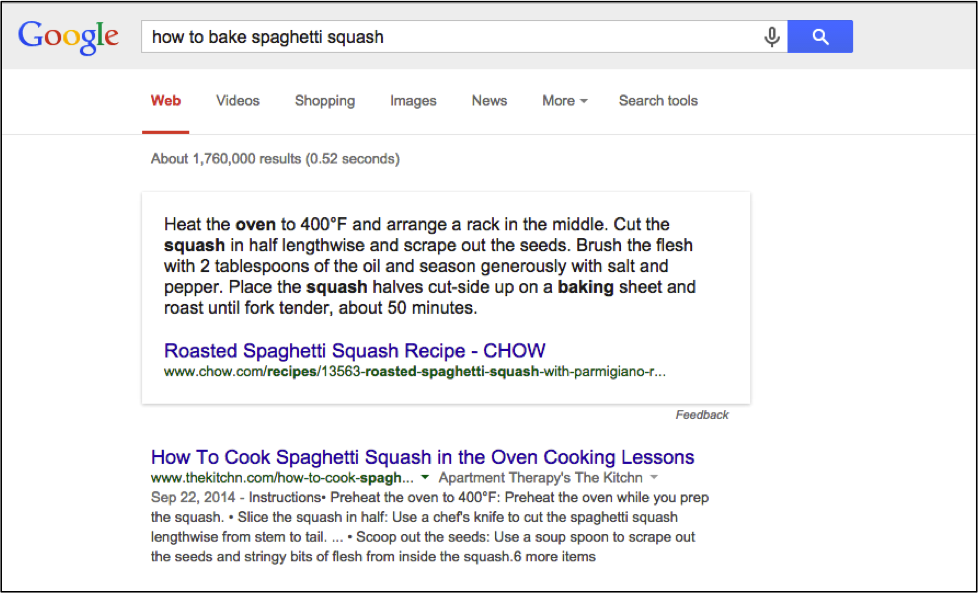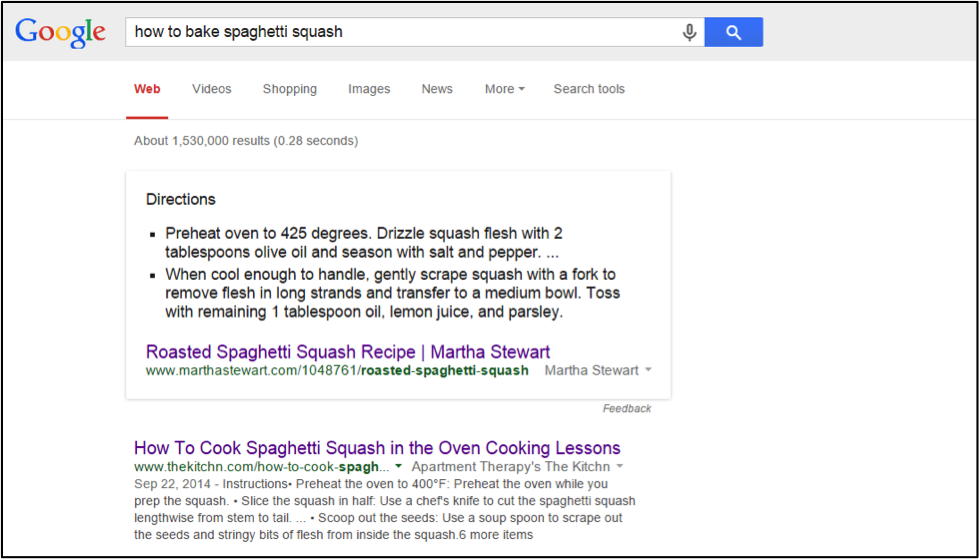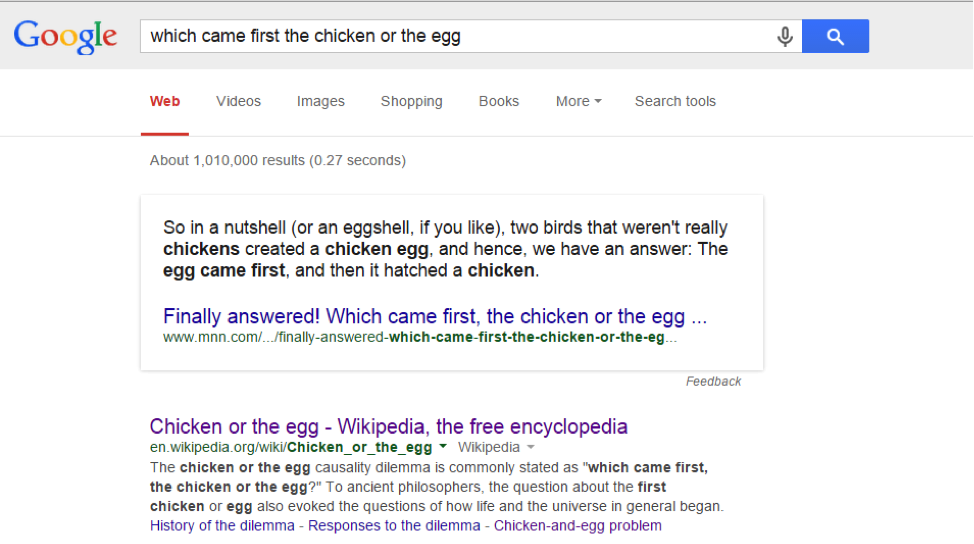A Lesson in Searching for “Direct Answers”
B2B marketers should focus on understanding how their buyers’ lexicon manifests in search and ensure they have helpful content aligned with the intent of the search query.
It was early October, and in attempt to get myself into an autumn frame of mind, I decided to buy some squash and prepare it for dinner. I’ve written several blog posts about my kitchen ineptitude, so it should come as no surprise that I turned to Google to educate myself on squash preparation.

Seasoned Googlers and people who focus on the nuances of search should notice something interesting right away in the photo above. See the short blurb of information presented before the search results that answers the search query? Google’s “direct answers” are evolving, and partial credit should be given to the recent Hummingbird update (see the blog post “Enhance SEO by Considering Buyer Lexicon and Intent”), which enhanced functionality for conversational search.
What’s a direct answer?
Basically, Google has a way to pull answers to search queries directly from third-party sites when the search is executed. Because this data is presented before the organic results (with a credit to the original source), it’s going to be the first result that most users see.
What does that mean for organic search?
If you’re an SEO specialist, you might be searching for the Pepto Bismol right about now, because the completeness of the information contained in the direct answer eliminated any need for me to click on subsequent ranked pages. Don’t panic! It’s still critical to comply with best practices for optimizing for search, including obtaining editorial links, writing good meta information, applying clean structured markup to pages and avoiding keyword stuffing.
In addition to following these standard practices, B2B organizations also need to pay attention to how information itself is organized within the markup on landing pages. Having clean, uninterrupted text on the landing page that aligns most directly with the question phrases in the search query and provides an answer to that question seems to make a page more likely to be selected as Google’s direct answer.
Several weeks later, I performed the same Google search and received a direct answer from a different third-party Web site:

he main differences in the markup besides the body text itself were the markup descriptors –“instructions” during my first search, vs.“directions” during my second search. (And of course, Martha Stewart’s omnipresence as the Leader of All-Things Kitchen and Crafts.) Upon closer examination of Martha’s landing page, I see the phrase “how to cook” followed by “roasted spaghetti squash” and the step-by-step instructions. There’s a direct reiteration of my question (“how to cook roasted spaghetti squash”) with the answer following shortly after.
What’s the conclusion?
The consensus is that it’s too soon to tell whether or not direct answers will impact B2B clickthroughs to pages that rank high in organic search results. The business problems that individuals are looking to solve early in the B2B buying process, when search is typically used as an information-seeking tactic, are too complex to be answered by quick extraction of information in a direct answer. B2B buyers aren’t Googling Justin’s Bieber’s birthday or how to cook spaghetti squash – they are looking for information on business challenges.
Therefore, B2B search marketers shouldn’t be too concerned with the potential of enhancements in direct answers (and most recently, structured snippets) to usurp their organic rankings in the near future. That said, it’s an important trend to be aware of and monitor in your own search activities.
B2B marketers should focus on understanding how their buyers’ lexicon manifests in search and ensure they have helpful content aligned with the intent of the search query. Look for clues in how lexicon changes as buyers become more educated; this is typically a good indicator of where they are in the purchase process. Think of the questions they ask and the language they use. Finally, deliver relevant content and messaging through search that benefits the buyer by being both practical and helpful.
Direct answers can’t address the all complexities of the B2B buying process, but they can provide easy answers to quick questions:
